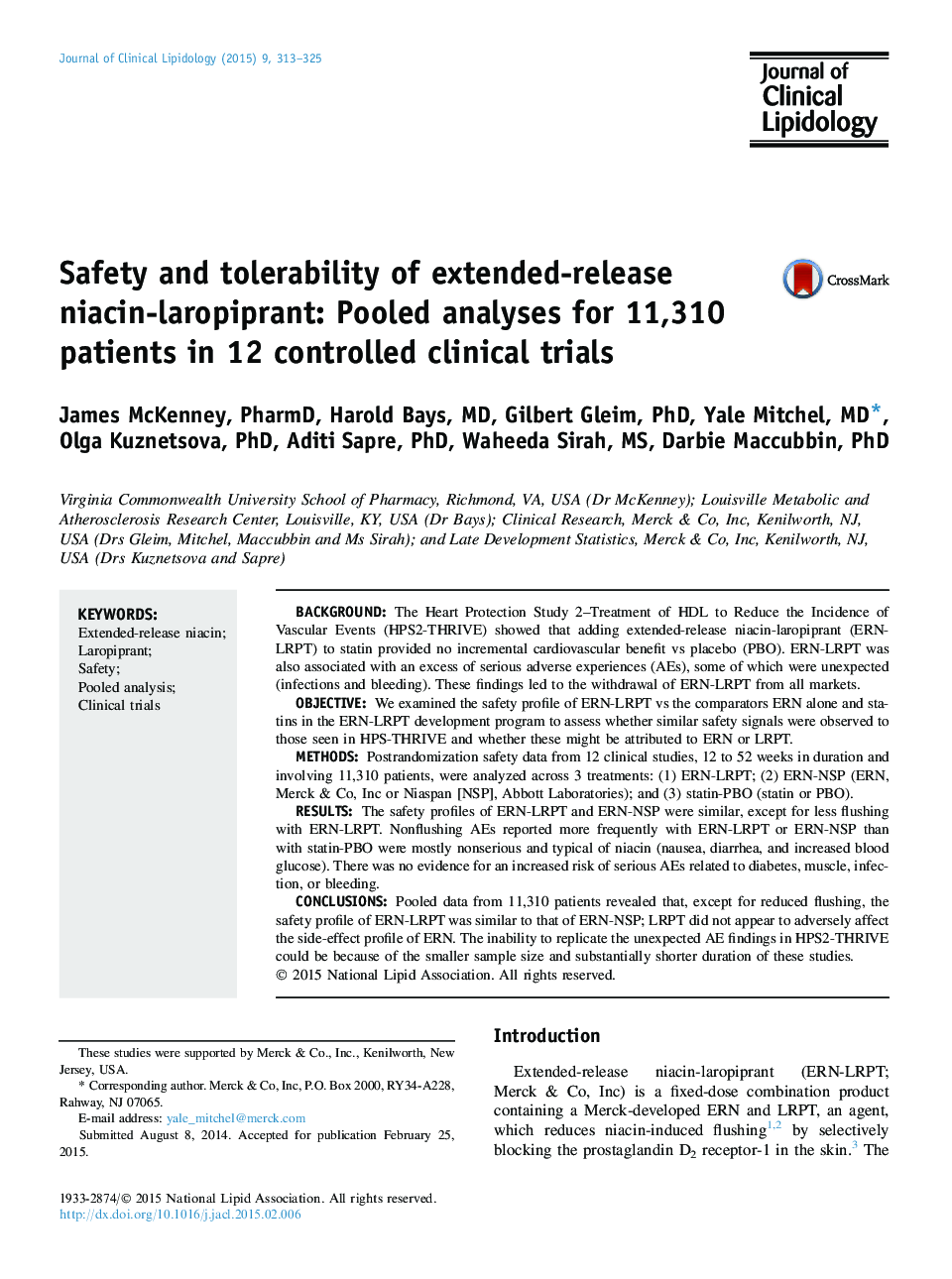| Article ID | Journal | Published Year | Pages | File Type |
|---|---|---|---|---|
| 5985543 | Journal of Clinical Lipidology | 2015 | 13 Pages |
â¢The adverse event (AE) profile of extended-release niacin-laropiprant (ERN-LRPT) 2 g was examined.â¢Data from 12 clinical studies (12-52 weeks; N = 11,310 patients) were pooled.â¢Except for reduced flushing, the AE profile of ERN-LRPT was similar to ERN 2 g alone.â¢AEs were mostly nonserious and typical of ERN (gastrointestinal, increased glucose).â¢LRPT did not appear to adversely affect the AE profile of ERN.
BackgroundThe Heart Protection Study 2-Treatment of HDL to Reduce the Incidence of Vascular Events (HPS2-THRIVE) showed that adding extended-release niacin-laropiprant (ERN-LRPT) to statin provided no incremental cardiovascular benefit vs placebo (PBO). ERN-LRPT was also associated with an excess of serious adverse experiences (AEs), some of which were unexpected (infections and bleeding). These findings led to the withdrawal of ERN-LRPT from all markets.ObjectiveWe examined the safety profile of ERN-LRPT vs the comparators ERN alone and statins in the ERN-LRPT development program to assess whether similar safety signals were observed to those seen in HPS-THRIVE and whether these might be attributed to ERN or LRPT.MethodsPostrandomization safety data from 12 clinical studies, 12 to 52Â weeks in duration and involving 11,310 patients, were analyzed across 3 treatments: (1) ERN-LRPT; (2) ERN-NSP (ERN, Merck & Co, Inc or Niaspan [NSP], Abbott Laboratories); and (3) statin-PBO (statin or PBO).ResultsThe safety profiles of ERN-LRPT and ERN-NSP were similar, except for less flushing with ERN-LRPT. Nonflushing AEs reported more frequently with ERN-LRPT or ERN-NSP than with statin-PBO were mostly nonserious and typical of niacin (nausea, diarrhea, and increased blood glucose). There was no evidence for an increased risk of serious AEs related to diabetes, muscle, infection, or bleeding.ConclusionsPooled data from 11,310 patients revealed that, except for reduced flushing, the safety profile of ERN-LRPT was similar to that of ERN-NSP; LRPT did not appear to adversely affect the side-effect profile of ERN. The inability to replicate the unexpected AE findings in HPS2-THRIVE could be because of the smaller sample size and substantially shorter duration of these studies.
